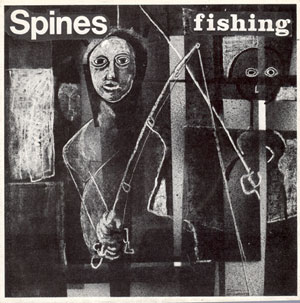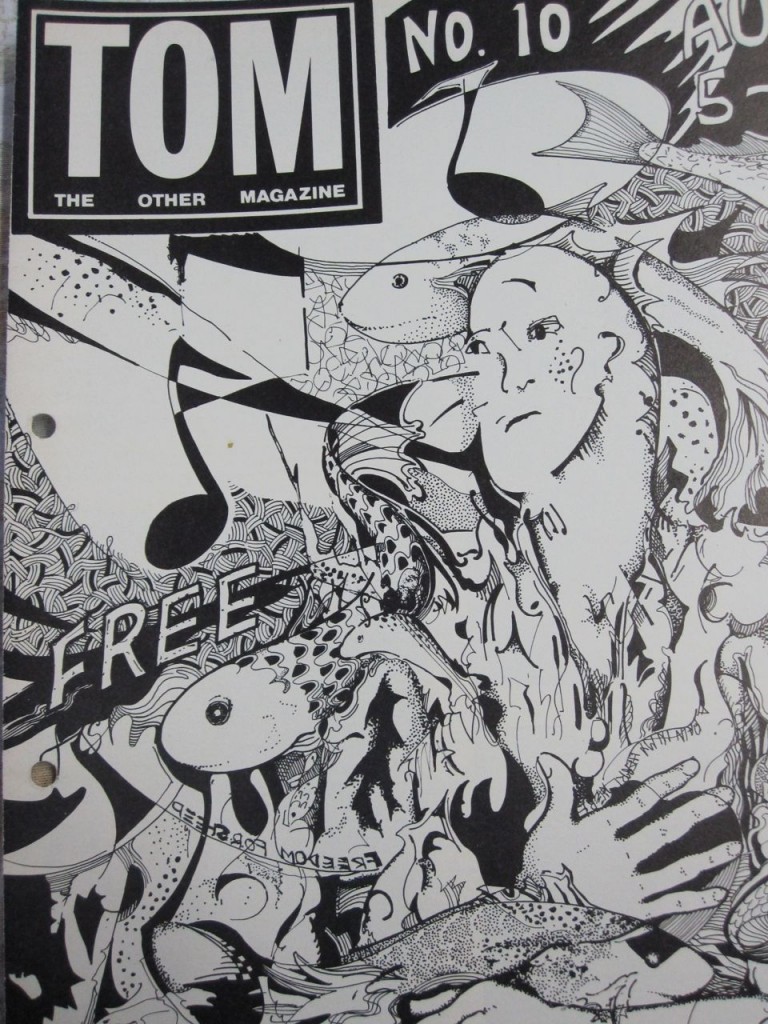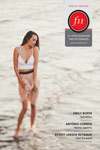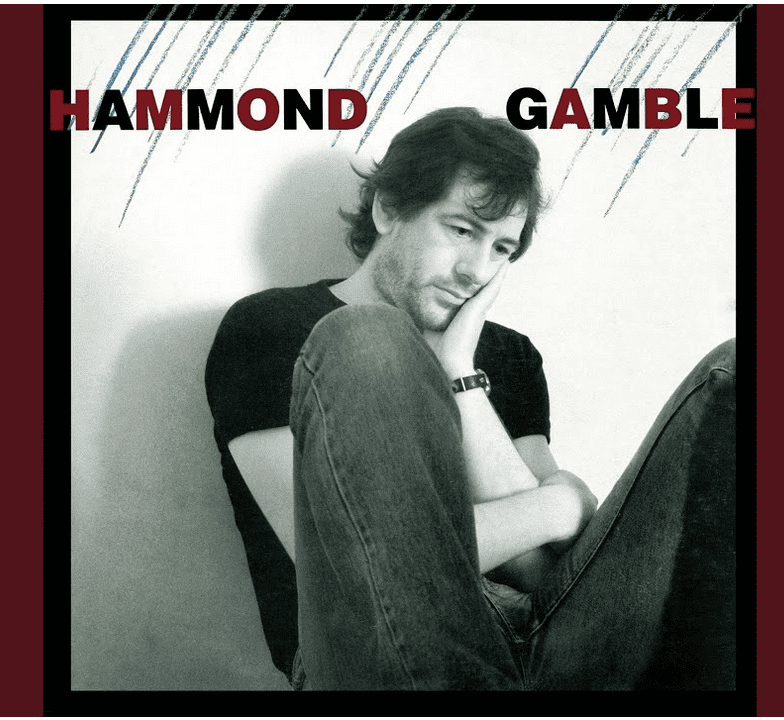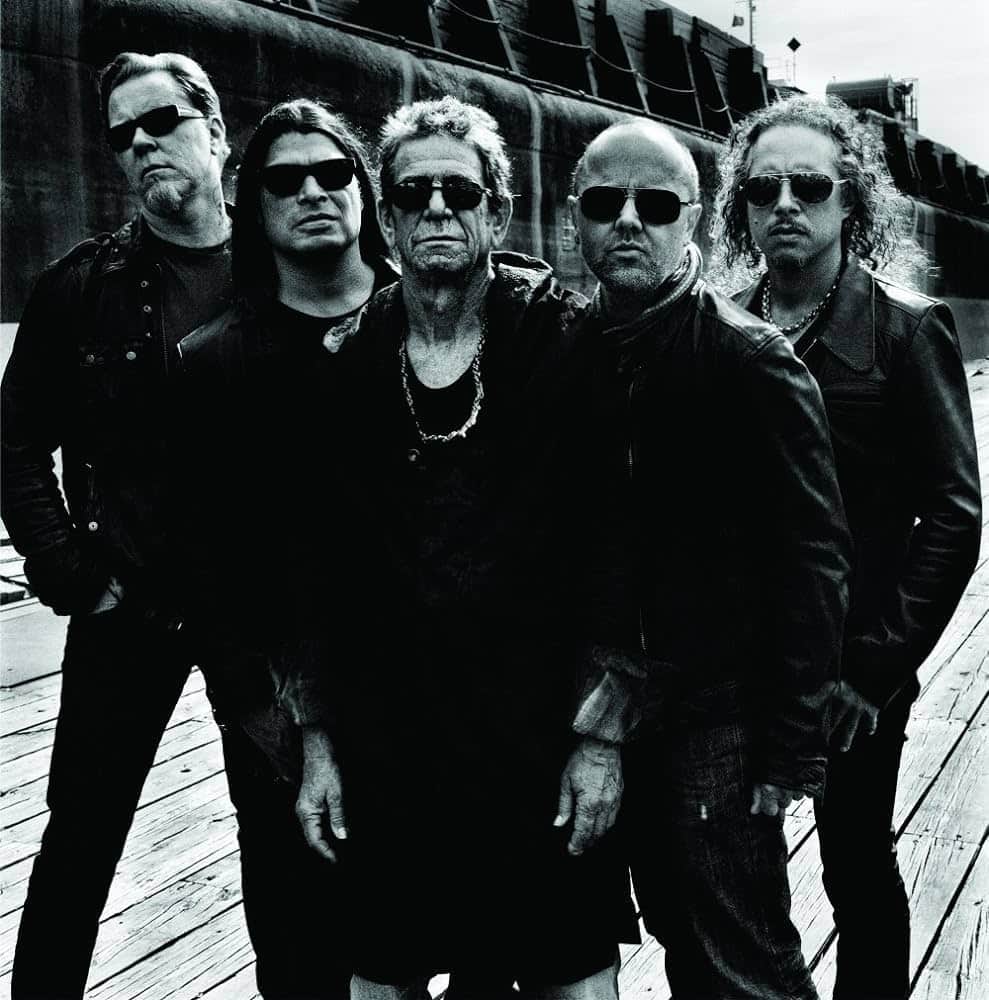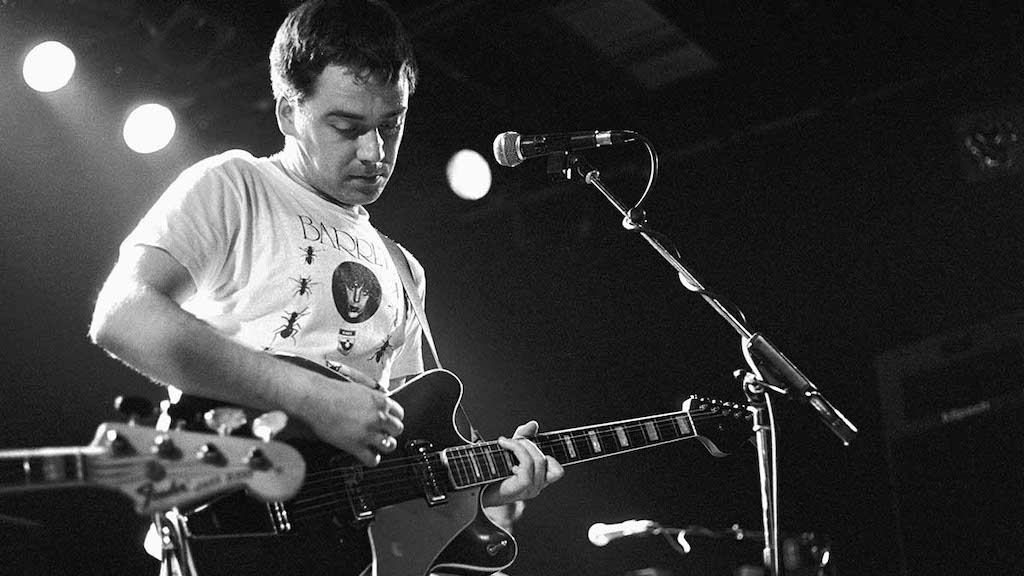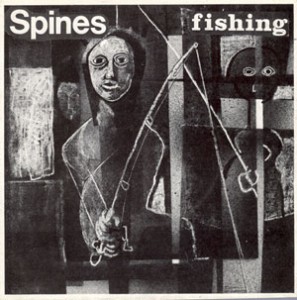 Gary Steel intended to climb into the crumbling catacombs of his back catalogue, and disinter a different story Every Day In May (EDIM), but he got the flu. So he’s extending the concept until he makes up the full 31 days. Today’s piece was penned by John Henderson, and appeared in In Touch magazine, April 16, 1982.
Gary Steel intended to climb into the crumbling catacombs of his back catalogue, and disinter a different story Every Day In May (EDIM), but he got the flu. So he’s extending the concept until he makes up the full 31 days. Today’s piece was penned by John Henderson, and appeared in In Touch magazine, April 16, 1982.
Note: This was the cover story of the April 16, 1982 edition of In Touch, and the Spines’ Jon McLeary was kind enough to devote an artwork for the cover. I’m sure John Henderson will wince when he sees this online, because it’s undoubtedly not his greatest work, tending towards hyberbole, but it’s worth putting into the public domain because there’s so very little to be found about Jon McLeary and his underrated group, who never quite managed to fit into any of the musical niches of early ‘80s Wellington, being neither punk, post-punk or mainstream. Yes, Jon is still around, and so is a different version of the Spines. There is an interesting series of reminiscences by McLeary here.
CREATIVE GENIUS IS not a term lightly used but if there was ever an artist who deserves the title, Jon McCleary must be he. Proficient in art, music and drama, he is a prolific songwriter and painter but unlike many less talented artists retains the modesty and clarity needed for continued development.
McLeary was born somewhere in the North Island in December 1957. From an early age he was exposed to his elder sister’s records (Beatles, Monkees, and Kinks) and took up drawing while still a child. At 15 he started playing guitar, but it was not until 1976 that he started writing songs and playing in earnest.
A period alone in the country in 1977/78 saw him developing a personal style in music, writing, and oil painting, and in late 1978 he met Louise Loft and formed with her the acoustic duo Negative Theatre. Their first gig was at the second Nambassa (where he met bassist Rob Mahoney, now a fellow Spine), and in late ’79, following the Christchurch Arts Festival, McLeary moved to Wellington where he played in Negative Theatre for some 10 months.
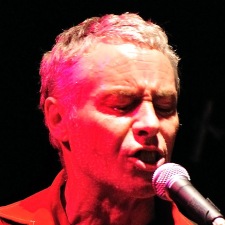
After a short solo period he starred in the play Gimme Shelter at Bats, at the same time holding an exhibition of his oil paintings and performing a solo childrens’ act, Craven The Hunter.
In May 1981, the Spines were formed, with McLeary on guitar and vocals, Rob Mahoney on bass and Caroline Easther on drums. This lineup has remained unchanged.
The transition from the acoustic format was smooth, and in many ways the Spines remain McLeary’s band – not only does he write and sing all the songs but the arrangements as he writes them tend to persist through to the finished version. McLeary is unstinting in his praises of his fellow Spines, describing Caroline Easther as a “very good drummer who is good on lots of instruments with an open mind to new music and ideas.” Rob Mahoney is a veteran of many bands, is both young and experienced and plays superb bass in a wide variety of styles.
McLeary wrote a lot of songs when the band first got together and has been writing solidly ever since – he has just introduced three new songs into the band’s repertoire. He feels the three-piece format is ideal for the Spines – he cites the absence of “ego hassles” and the freedom that a three-piece gives, and feels that they have a long way to go to extend the format to its limits. He admits that it is hard work: “everything you do is going to be heard”, but the band are not considering additions to their lineup.
McLeary does not write or read music, he composes music straight onto his guitar. The other two Spines both read music, and even Mahoney sometimes finds it difficult to name the chords that McLeary plays. His guitar style tends to the atonal rather than the melodic, but he does not consider this a problem. A self-taught guitarist (in fact, individuality appears to be his strongest characteristic), he plays in a radically different style from the normal, but feels his style is appropriate to the feel of his lyrics, even if he is “classically speaking not very good on the instrument.”
His lyrics display a very individual outlook on the world: “I’ll string words along that sound right, with meanings that fit – the meanings of words before – but what they are saying is nothing.”
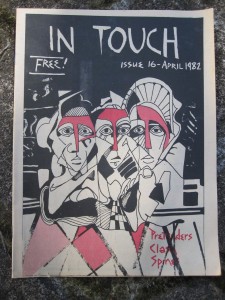 He expands: “We all have certain things in common – death, pain, humour – certain vague feelings, and that’s one way we can communicate with each other because words can be a barrier between us and the world, because we think in words. Carefully chosen words can lose their meaning, and that’s why I think my songs are meaningless – no questions or answers. My songs are full of statements that aren’t opinions – they’re experiences, and in a sense that’s more real because you can communicate at a direct level. The band doesn’t have to talk about it because we play together.”
He expands: “We all have certain things in common – death, pain, humour – certain vague feelings, and that’s one way we can communicate with each other because words can be a barrier between us and the world, because we think in words. Carefully chosen words can lose their meaning, and that’s why I think my songs are meaningless – no questions or answers. My songs are full of statements that aren’t opinions – they’re experiences, and in a sense that’s more real because you can communicate at a direct level. The band doesn’t have to talk about it because we play together.”
He feels that his words are often humorous, and is surprised that they are not often perceived that way, but also likes to think that his songs are imparting a serious message: “I try to define reality – everything that’s there – and express it in my songs, so that it becomes the present reality for the audience. When I play music I try to work my way up into a state of power and awareness, like you can do with primal dancing. The Spines’ music requires concentration from the listeners and I think a lot of our criticism stems from that.”
At the moment McLeary feels that Wellington is the right place for him – he loves Wellington, even though it is hard for him to make a living here. He would like to put out singles: “The Kinks and the Beatles put out thousands of singles – I’ve written 160 songs now and some of them are singles material.” The Spines EP is to be released in April, the day after the title track ‘Fishing’ is featured on Radio With Pictures. The EP, on Ripper, has four original songs, one with Neil Duncan (Hot City Cats, Primitive Art Group) on saxophone. The cover has an interesting history: “I was doing an exhibition using a certain black and white style with enamel spray cans, black felt pens, snopake and pastel, and I did a picture of somebody fishing and being fished. Halfway through the picture I realised that it would fit the song.”
McLeary became interested in painting while he was learning guitar, and is as accomplished an artist as he is a musician. He started with oils (“into the deep end”), and over the years has been getting into many other media, especially pastels. He now concentrates on drawings. “I haven’t used a paintbrush for a long time – I’ve been using palette knife on oils.” He feels that the development of his art has mirrored that of his music, being manifestations of the same personal experiences. He has been exhibiting since he has been in Wellington (two years), and has had six exhibitions in that time. He does not make much money, but his art tends to support itself. His paintings are generally small and do not seem to have any obvious influences. In fact, he likes “the best artists from each school, going way back.”
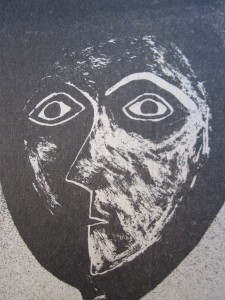
He works in six-to-eight-hour bursts, both painting and songwriting, and likes to finish a work in one sitting, although “there are some paintings I could keep going on forever.” His last two exhibitions, Science and Egypt, both “lean toward a prehistoric world feeling – the faces tend to have a sameness about them and sometimes that feeling is so intense that the painting is really good. I suppose that feeling is me but I’m not an expressionist, I’m a realist really, and I paint what I feel when I’m painting. My expression cuts between emotion and intellect, and I try to hit somewhere in-between. My style is more physical than anything else.”
McLeary is a harsh self-critics, but still feels that his latest exhibition and his latest song are the best he has done. “Both my songs and my paintings have an inherent optimism, even though they might seem down. I feel strongly about right and wrong – I feel that in many ways there is no such thing – and I feel that judgments on things tend to limit them. I challenge the world on a one-to-one basis.”
Jon McLeary is honest and uncompromising and responds to the human condition with humour and passion. He is unlikely to attract middle of the road tastes, and doesn’t seem worried about it: “I can laugh at things and scream at them – I want people to laugh with me, but I want my lyrics to hit people in the spine.” JOHN HENDERSON

